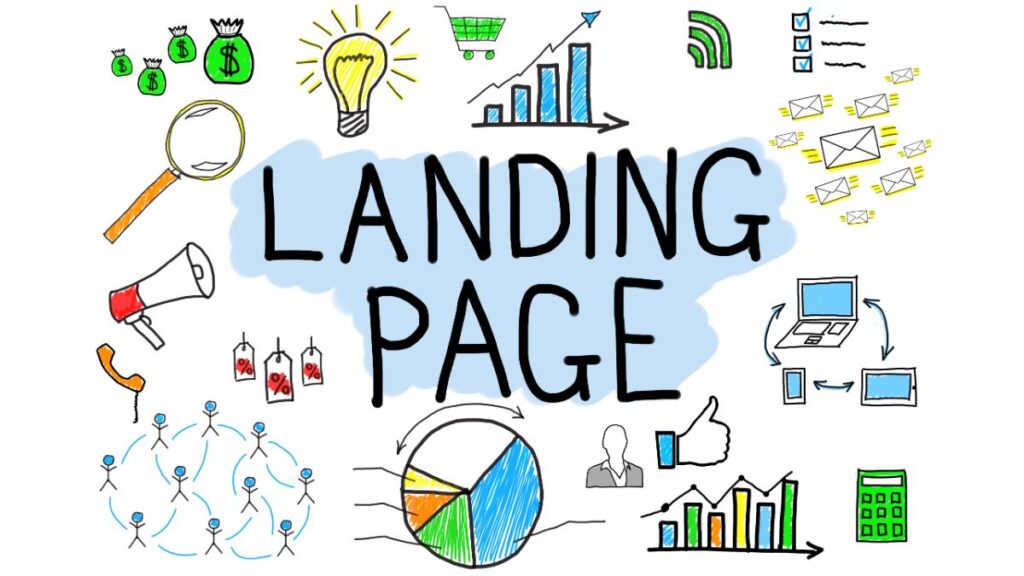Ever clicked on a riveting ad only to be directed to a perplexing page that barely reflects the promised offer? Oh, we’ve all been there! Bridging the gap with your Google Ads landing page is crucial for maintaining potential customer attention. Additionally, it plays a pivotal role in boosting your conversion rates by providing a seamless transition from ad to page. In this landscape, let’s meander through the pivotal dos and don’ts for crafting a high-converting landing page.
Unraveling Google Ads and Landing Pages
When we talk about a Google Ads campaign, we’re essentially steering potential customers from their search query directly to our offered product or service. The PPC landing page, thus, becomes the critical bridge making this possible. A solid landing page experience not only spikes your conversion rates but also positively impacts your Google Ads Quality Score, a crucial metric influencing your ad placements and costs.
The Paramount Dos for Google Ads Landing Page
Relevant and Quality Content
Crafting ad landing pages demands a meticulous blend of relevance and quality in content creation. Begin by ensuring the echo of ad copy permeates throughout the landing page, establishing an unmistakable thematic coherence. Keywords, particularly the click-triggering ones, must be visibly present. Ensure they are interwoven through headings and body text seamlessly. Maintaining visitor interest is achieved by ensuring content aligns with their search query. This strategy also boosts your Google Ads Quality Score and strengthens user trust.
User Experience (UX) and Design
Delving deeper into the realm of user experience, it’s pivotal to comprehend that every element, from the aesthetic appeal to the structural design of your landing page, plays an integral role in user retention and conversion. Your design should not only captivate but also facilitate an intuitive, frictionless navigation path that effortlessly guides users toward conversion. Moreover, prioritizing a mobile-friendly interface is imperative to cater to the burgeoning population of mobile users, thereby ensuring an inclusive, accessible, and optimized landing page experience for all.
Clear and Concise Calls to Action (CTAs)
A high-converting landing page prominently features clear and concise CTAs. Strategic positioning and contextual relevance further enhance their effectiveness. CTAs should be crafted in a manner that compels users, through persuasive, action-oriented language and visually striking design elements, to take the desired action. Whether it’s subscribing to a newsletter, initiating a purchase, or downloading a free trial, your call to action button should be irresistibly inviting and provide a clear, unambiguous pathway to conversion.
Tracking and Analytics
To refine and optimize your landing page incessantly, embedding analytical tools such as Google Analytics and Google Ads conversion tracking is indispensable. These platforms empower you to delve into user interactions, engagement metrics, and conversion pathways on your landing page. By understanding how users interact with various elements, discovering what captivates their attention, and identifying potential roadblocks in their journey, you can make informed, data-driven decisions to continually optimize the landing page. This relentless pursuit of optimization through analytical insights ensures your landing page not only meets but exceeds user expectations, thereby maximizing conversion potential.
Steering Clear of Don’ts in Google Ads Landing Page
Avoiding Irrelevant Content
Ensuring absolute harmony between your ads and landing pages is foundational to sustaining user interest and trust. The alignment doesn’t merely stem from mirroring ad promises, but it is also deeply embedded in understanding and addressing the user’s search intent and journey. Craft content that not only aligns with the ad promise but also anticipates and answers potential queries, thereby enriching the user’s journey from click to conversion. To abate bounce rates, guarantee that the transition from your ad to your landing page is seamless and logical, reinforcing confidence in potential customers that they are in the right place to solve their needs.
Neglecting Mobile Users
The pervasive usage of mobile devices in today’s digital world mandates a mobile-optimized landing page. But beyond mere optimization, consider the nuanced differences in user experience between desktop and mobile interfaces. Tailor content, design, and navigation specifically for mobile users, ensuring not only that your landing page is accessible but also that it caters to the distinct browsing habits and preferences of the mobile demographic. Implementing responsive design and ensuring that content, images, and CTAs are easily navigable and clickable on smaller screens will preserve user engagement and facilitate smoother journeys toward conversion.
Overcomplicating Design and Navigation
Abiding by the K.I.S.S. principle transcends mere simplicity in design and navigation. It’s about eliminating potential barriers that could disrupt or dilute the user’s focus on their conversion path. Navigate through your landing page as a user would identify possible friction points, and streamline navigation to make the journey as intuitive and effortless as possible. Utilize clean layouts, coherent typography, and logical flow to guide users subconsciously towards the desired action, while ensuring that every element on the page serves a clear, user-oriented purpose.
Ignoring Loading Speed
While page loading speed is undeniably critical, understanding and addressing the factors that influence it are equally paramount. Explore your landing page’s technical facets, pinpointing elements like large images or numerous HTTP requests that hinder loading times. Also, address technical efficiencies by minimizing CSS and JavaScript to enhance load performance. Employ strategies like lazy loading for images, enabling browser caching, and utilizing a Content Delivery Network (CDN) to enhance loading speed. Keep in mind, each fraction of a second profoundly impacts user experience and conversion rates. Simultaneously, it affects your SEO rankings, thereby shaping visibility and accessibility to prospective customers.
Practical Steps to Optimize Your Landing Page
Utilizing A/B Testing: Do blue CTAs outperform red ones? Does a different headline bolster conversions? A/B testing is your steadfast ally in answering these and enhancing your landing page meticulously.
Regularly Updating and Improving Content: Following guidelines like the Chicago Manual of Style ensures content accuracy and polish. Such adherence radiates a critical sense of professionalism in your digital presence.
Utilizing Visual Elements Wisely: An astute mix of text, images, and videos can brilliantly showcase your product or service without compromising loading speeds. Thoughtful media integration enhances visual appeal while maintaining swift, user-friendly navigation through your offerings.
Conclusion
In the dynamic, ever-changing world of digital marketing, your Google Ads landing page takes center stage. It acts as the crucial link between the initial click and ultimate conversion, ensuring your digital marketing efforts bear fruit. Your landing page transcends being a mere digital touchpoint, evolving into a powerful catalyst. It seamlessly converts an inquisitive clicker into a dedicated customer, bridging curiosity with commitment. Your landing page should transcend merely mirroring ad allure, by genuinely delivering on promises and surpassing expectations. Providing tangible value becomes pivotal, thereby nurturing trust and enabling successful conversions.





